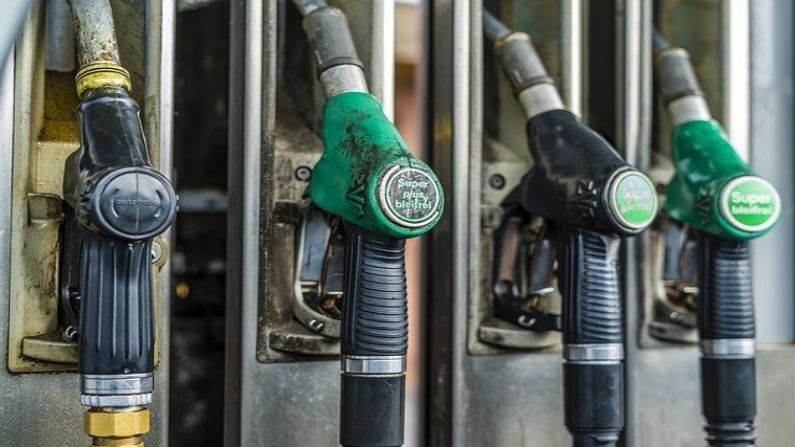Rising fuel prices burning a hole in your pocket? Here’s a hedging strategy
Petrol and diesel prices: The best way to counter fuel price hike is to invest in OMCs like Indian Oil, HPCL and BPCL
- Harsh Chauhan
- Last Updated : June 16, 2021, 15:31 IST

Just like the markets, fuel prices are in an uptrend hitting record highs everyday. After 26 rounds of hikes, petrol prices jumped by Rs 5.97 per litre and diesel by Rs 6.38 since May 4, when the state-owned oil firms ended an 18-day hiatus in rate revision in May.
After today’s revision, a litre of petrol and diesel in Delhi will cost Rs 96.66 and Rs 87.41 respectively, according to Indian Oil Corporation, the country’s largest fuel retailer. While in Mumbai, where fuel prices are highest among all metros, a litre of petrol will cost Rs 102.82 and diesel Rs 94.84.
There is no doubt that these price hikes are burning a hole in your pocket. But if you are someone who is looking out for a strategy that can help overcome the impact of price hikes. Well then here is a strategy that can help you just do that.
Hedge it
The best way to hedge fuel price hike is to invest in OMCs (oil marketing companies) like IOC (Indian Oil Corporation), HPCL (Hindustan Petroleum Corporation Limited) and BPCL (Bharat Petroleum Corporation Limited) as price hike will lead to better margins for these companies. Sample this: Auto fuel margins are almost back at FY21 average levels, the highest annual average margins ever. The recovery is being driven by continuous retail price revision, making a new high every time.
“OMCs are slowly emerging from a regulated structure across businesses. The real benefits of deregulation in the form of auto fuel margin expansion have started flowing through only over the last two years and are set to rise further. With the disappearance of kerosene subsidy and likely deregulation of LPG, the last of the clutches too will be eliminated and the next leg of margin expansion is imminent,” said Antique Stock Broking in a report.
Besides, a sharp increase in petrol retail prices has made ethanol blending very profitable, adding over Rs 0.95/litre to petrol’s overall margins currently, added the note. The brokerage firm believes that despite FY21 witnessed historic high auto fuel margins, they are likely to rise further over the next few years driven by the continuous investments by OMCs in marketing.
HPCL | Price target: Rs 380 | Upside: 24%
HPCL is the only refiner with large refining capacity growth of 55% over the next 2 years, in a period when refining margins are expected to bounce back. HPCL has been the most aggressive among OMCs over the last few years losing just 1.7% and 1.0% market share in petrol and diesel to private players who now have 12% market share. Its large pipeline network is likely to add to marketing margins relative to peers. HPCL is also the most geared to GRMs (gross refining margins) and marketing margins. With GRM set to bounce back and marketing margins to continue to improve over the next 3 years, HPCL is likely to benefit the most.
BPCL | Price target: Rs 613 | Upside: 27%
BPCL remains a disinvestment play. The process is underway with due diligence currently in progress. Disinvestment is likely to be completed by end of FY23. Likelihood of global majors joining the consortium to make bidding more competitive. The commissioning of PDPP (propylene derivatives petrochemical project) plant at Kochi is likely to add US$ 1/barrel of oil to GRMs. Mozambique now is a concern, given the political issue. However, management feels that activity would restart in 6-12 months. The disinvestment process is likely to unlock the value of businesses like CGD (city gas distribution) and LPG (liquefied petroleum gas) apart from the efficiency gains on crude procurement and cost rationalization.
IOCL | Price target: Rs 146 | Upside: 26%
IOCL has underperformed both BPCL and HPCL over the last few years. Loss of market share, unfavourable petrochemical margins and lower refining margins were contributing factors. However, the petrochemical cycle has recovered, though the outlook for polymer margins is not great, refining margins are expected to bounce back, while market share loss is likely to stop as IOCL plans to expand its marketing network in line with peers. With the completion of large pipeline investments, recovery in marketing margins along with improvement in refining fundamentals, IOCL is poised to bounce back.
(Disclaimer: The recommendations in this story are by the respective research and brokerage firm. Money9 & its management do not bear any responsibility for their investment advice. Please consult your investment advisor before investing.)
Download Money9 App for the latest updates on Personal Finance.
Related
- KPMG को सेमीकंडक्टर इंडस्ट्री में तेजी की उम्मीद, जानें कौन से स्टॉक्स हैं सबसे आगे
- TCS-इंफोसिस समेत इन IT स्टॉक्स के आए टारगेट प्राइस, जेफरीज ने दी खरीदने की सलाह, 2025 में मिलेंगे अच्छे रिटर्न!
- इन म्यूचुअल फंड स्टॉक्स में भी है कमाई का मौका! ब्रोकरेज फर्म ने बोला 39 फीसदी तक मिलेगा रिटर्न
- Becoming a Crorepati, not a distant dream anymore!
- Markets getting ready for rush of IPOs
- SIP investments rising, so is SIP stoppage ratio!

